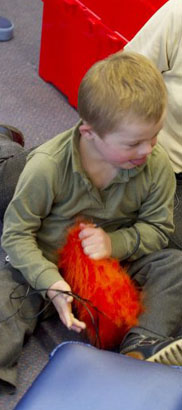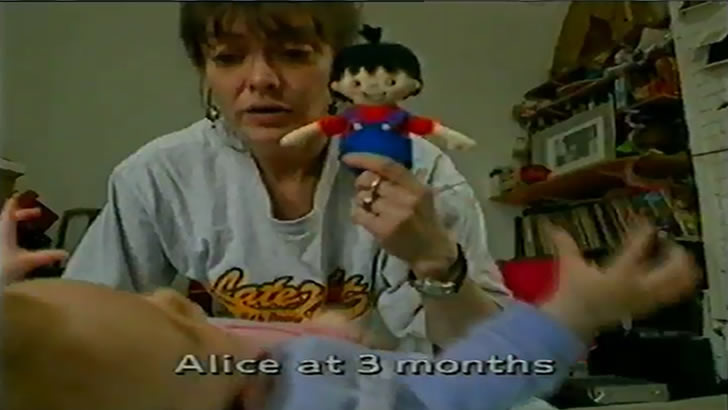Infants arrive in the world with:
- Some starting points for communication;
- An ability to recognise patterning;
- The capacity to distinguish their home language over others; and
- A preference for the moving human form.
What aspects of pre-verbal communication do you notice?
Learning through interaction
In the clip on the previous page, a parent engages her baby in interaction, helping to establish fundamental communication skills that will be needed later for conversation.
In this clip, Lesley, a teaching assistant uses the same approach with Callum, a child with PMLD.
-
 Teaching assistant Lesley interacts with Callum1:22
Teaching assistant Lesley interacts with Callum1:22

What features characterise these early interactions?
Click for the answer
You might have noticed how:
- The child/early communicator contributes actively;
- The adult reinforces and builds on spontaneous responses and vocalisations;
- Both participants are positive;
- Interaction is inherently pleasurable - the child is given the clear message that s/he is valued.

From the two clips that you have watched in this section, list the features that characterise early interactions.
Click for the answer
At such an early stage of development, the earliest interactions include:
- Turn taking;
- Eye contact;
- Monitoring gaze; and
- The timing of utterances.
The child's pre-verbal exchanges with adults and caregivers are the foundations for language development. With over 80% of all everyday communication estimated to be non-verbal, the development of these skills will be of lasting benefit.
